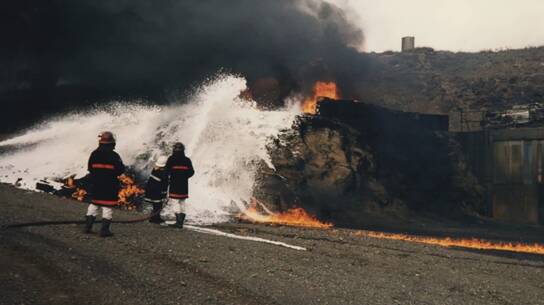
THE Department of Environment has recommended a ban on the chemical at the centre of Williamtown's contamination disaster, which would bring Australia into step with 171 countries that have ratified a landmark United Nations agreement to phase out the chemical.
Subscribe now for unlimited access.
or signup to continue reading
The Newcastle Herald can reveal the price of the ban to government and industry has been tallied at roughly $39 million, compared to $100 million to keep the chemical in circulation with tighter regulation.
Perfluorooctane sulfonate (PFOS) - a potential carcinogen that has tainted properties surrounding the Williamtown RAAF base - was listed on the Stockholm Convention in 2009, meaning countries had to restrict its production and use.
Nearly a decade later, Australia is one of the only OECD countries yet to act on the listing, which has been ratified by the UK, Germany and China, the biggest PFOS producer internationally.
Read more:
In a regulation impact statement, the Department of Environment said action was necessary because of "market and regulatory failure" to address risks posed by PFOS in Australia.
Failure to ratify the listing could damage Australia’s reputation and “standing in international markets”.
“The listing of PFOS signals international acceptance by scientific experts and governments of associations between PFOS exposure and various adverse human health and environmental effects,” it said.
“The community and the environment, rather than polluters, are bearing the burden of the adverse impacts.”
The statement outlines four different routes the federal government could take, including no action, "light touch" regulation or a total ban.
Ratifying the treaty with a total ban would be the cheapest option - aside from no action - eliminating 97 per cent of PFOS emissions at a cost of $39 million over 20 years.
The only allowable use of the chemical would be for X-ray photography and certain medical devices.
A cost benefit analysis found a total ban would deliver the "greatest net benefit" to Australia, by cutting emissions in the shortest timeframe, reducing the potential for further contamination and avoiding “considerable” costs to industry.
The other two options, which would instead see stricter regulation of PFOS, were both estimated to cost in the vicinity of $100 million.
They would slash emissions by more than 90 per cent, but businesses would be hit with extra costs to dispose of the chemical correctly.
Under the first, the Stockholm treaty would not be ratified but there would be new controls on PFOS emissions and disposal. This would allow Australia to continue to import from countries that had signed the treaty.
The other option would see Australia ratify the treaty but allow existing uses of PFOS to continue, including for firefighting, hard chromium plating, photo imaging and certain medical devices.
Both options would still present the risk of “accidental releases” of the toxin into the environment.
The report found that total PFOS consumption in Australia plummeted 83 per cent between 2000 and 2015, and it is not known to be present in any consumer products being imported.
The main continuing use of the chemical is for firefighting, and while it has been phased out by most government agencies, in 2013 it was estimated to be present in about 30 per cent of firefighting foam stocks.
“It is not currently possible to estimate a safe level of PFOS,” the report said.
“Substances that are very persistent and bioaccumulative, like PFOS, have the potential to accumulate in the environment with long term effects that are unpredictable and difficult to reverse, even when emissions cease.”

